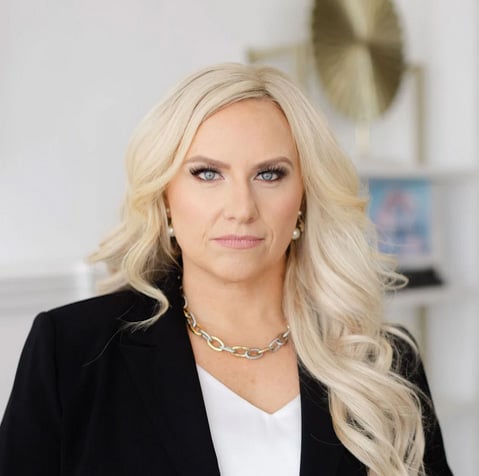Mother’s Day and the changing face of family dynamics and custody arrangements
By Holly J. Moore
Since I founded my firm, the Moore Family Law Group, in 2008, I’ve witnessed the evolution of American family dynamics. I’ve also seen firsthand how these shifting dynamics have influenced court decisions and legal strategies.
In the past, many family courts almost always awarded primary custody to mothers. Decades ago, that tendency made sense—when a married couple had children, the father was often the primary breadwinner. Children spent the majority of their time with their mothers, and a working single father would likely have found raising a child alone logistically impossible.
In today’s day and age, mothers and fathers often both work outside the home, and most courts have moved away from assuming that a child would be better off with one parent over the other. Modern families divide work and child care more equitably than they did in past generations, which means that custody decisions tend to be more equitable too.
Fittingly, custody law has become a court of equity. There are no set rules. Everything is determined using the standard of best interests of the child. Courts will take parents’ wishes into consideration, but at the end of the day, the child’s well-being matters most.
Of course, not all parents see it that way. Sometimes parents may think that the court is being unfair, but they’re misreading the reasons behind custody decisions. A family court isn’t going to make a custody decision to spite one parent (or both). The court is unconcerned with fairness to parents—it’s looking out for the children.
Because there’s no blueprint for how custody decisions should be made, parents don’t always know what to expect during a case. Primary custody isn’t the only issue they’re concerned with, either. Parents might wonder which parent the child spends holidays with.
My clients sometimes ask me how custody arrangements work on holidays. Most people hear the word “holidays” and think of Thanksgiving and Christmas. But for many families, “minor” holidays, such as Mother’s Day and Father’s Day, are important to celebrate.
With Mother’s Day just around the corner, it’s a timely consideration. In keeping with family courts’ move toward more equitable decisions, most courts will make an effort to let the child celebrate the holidays with both parents.
For children with heterosexual parents, that’s usually fairly straightforward. Generally, in families with a mother and a father, the mom gets Mother’s Day, and the dad gets Father’s Day. In families who may have two moms or two dads, the court still takes an equitable approach and likely will alternate Mother’s Day and Father’s Day or alternate the Saturday and Sunday on Mother’s Day weekend.
Each family is a little different, but assuming that the child wants to spend time with both parents and each parent has a healthy relationship with the child, courts will try to make it easier for parents to celebrate significant family days.
There’s a lot of nuance when celebrating these days in divided households. From my experience, I’ve found that negotiating agreements—rather than relying on court orders—tends to create the best outcomes.
It can take some creative thinking, but my clients and I have almost always been able to create an agreement that the parents and child are happy with.
The best part of this approach is the fact that there are so many different ways to fashion an agreement. For example, just using Mother’s Day, you can divide the day by hours—you might create a four-hour block from 8 a.m. to noon and another from noon to 4 p.m.
This strategy won’t work in every situation, but it works for families who live close together and have celebrations that may comprise breakfast or lunch.
If both parents can’t see the child on the same day, you can divide the weekend. One person gets Saturday; one person gets Sunday. This works well if the tradition is a lengthier celebration that takes all day.
If the parents prefer weekendlong celebrations, you can alternate the entire weekend each year. A common way to do this is giving one parent Mother’s Day weekend in even years and the other in odd years.
This works well for families who do not live close to one another or like to go away for a weekend to celebrate. It’s also usually less stressful for the child. Traveling from one parent to the other in a single day (or over the course of a weekend) isn’t particularly taxing if they live close by.
But if there’s a longer travel time, the child barely has a chance to settle in with one parent before it’s time to see the other. Longer trips by car or plane are especially difficult for babies and toddlers.
My clients usually can come to an agreement, but it’s still important that there’s an attorney present. If there’s considerable tension between the parents, having a family law attorney present can help them keep emotions in check. If needed, the attorney present—either myself or one of my colleagues—can act as a mediator.
Even if the parents have a perfectly civil relationship, having a family law attorney in the room can be helpful. I’ve been with my firm for almost 20 years, so if the parents are running out of ideas, I can suggest a few options that might appeal to both parties.
I’ve found that flexible custody arrangements are often instrumental in maintaining the family relationship. While the child’s best interests are always paramount, flexible custody arrangements let each parent feel heard.
People will likely always decry family court decisions as biased and unfair. Some family courts may be. But many have adapted to changing family dynamics and implemented a more collaborative approach to custody. That leads to better outcomes for families—on Mother’s Day or any other day of the year.
Holly J. Moore is a divorce attorney who works to help people navigate the complex and emotionally difficult process of divorce. She is the founder of the Moore Family Law Group, which is based in Southern California.
This column reflects the opinions of the author and not necessarily the views of the ABA Journal—or the American Bar Association.






